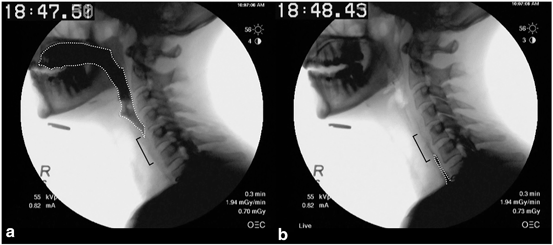Monday was a great experience in inter-disciplinary education -- I shadowed a Speech Language Pathologist! I was able to see two guided fluoroscopy swallow study, a bedside swallow study and discuss her scope of practice with her. She shared with me that she's a professor at a local college for a TBI course, and her previous experiences in pediatrics and skilled nursing facilities.

While most of this post is about swallow studies, aspiration and diet -- I assure you there is much more to it. I took a look at their scope and included this cute image to give a good, basic idea of what the SLPs can do!
We began with a bedside evaluation and then went to see guided fluoroscopy. I absolutely loved seeing the real time video of mastication and swallowing. There is something so fascinating about seeing the inter-workings of the body do its thing. It was like having x-ray vision! After fan-girling over SLP super powers she allowed me to pause and slow down the videos, identified structures (the "other" pyriform) and explained the difference between penetration and aspiration.
Here's an image I found displaying the oblique view the SLPs use to watch patient's deglutition (swallow). In one of the patient's radiographs, we identified osteophytes on the anterior cervical spine. The osteophytes were protruding somewhat into the esophagus, and the SLP noted that while what we were looking at wouldn't impede the patient's ability to swallow, there was potential that they would in the future. She also showed me the anterior and superior translation of the hyoid bone, and explained how the strength of the muscles attached ultimately effected a patient's ability to swallow.

When the SLP first identified the pyriform sinus, it was because of excess liquid (and barium) trapped there by the patient's weaker swallows. Just as some patient's arms or legs begin to weaken with various conditions, so can the muscles of the esophagus. While this wasn't exactly new information, when I spend most of my time focused on the extremities this was a good reminder to consider how any diagnosis has multi-system effects on patients.

When we identified the vocal cords, glottis, epiglottis and pyriform sinus, she explained the difference between penetration and aspiration. I've included the scale that she used to identify patient difficulties. Her explanation was succinct in that the main difference is food or liquids getting stuck in the vocal cords would be considered penetration, while material entering the trachea would be aspiration. She also explained how, when chart reviewing she looks at the patient's temperature to potentially identify aspiration pneumonia. And, when we watched guided fluoroscopy, she explained what it meant for a patient to be a silent aspirator: while the patient is in no evident distress, the substance is going into their trachea which can cause a myriad of issues including aspiration pneumonia.
Side note, when looking up temperature changes and aspiration I stumbled upon this article. It notes that food/liquid temperatures entering patient's mouth above and below a patient's body temperatures would accelerate the triggering of the swallowing reflex. And further explaining that cortical excitability of swallowing is strongly correlated to the improvement of swallowing function and strengthening sensory connection. The article wraps up with "the evidence supports the fundamental principle that every meal should be served as soon as cooked, especially in the elderly." While it comes from a relatively credible source, I did have a sneaking suspicion this person was just getting sick of being served cold dinner.

Along with picking her brain about her profession, I really enjoyed watching another discipline's chart review habits. While we have similar priorities in checking recent notes and patient status, vitals, medications and xrays - she was looking for different key factors that I would be. She also showed me some tricks to try to help me find things quicker, which for those of you who have attempted to learn a new documentation system know, was awesome.
She also explained the dysphagia levels and how they determine different diets, precautions, how she educates patients and her experience working with other therapists, including respiratory therapy! I've noticed in the acute setting, a lot of the old habits of "OT treats UE, PT treats LE" have yet to pass. I questioned the scope of the SLP's and asked her if they receive education on breathing treatments, cough techniques, etc. And, of course they do! A huge aspect of speech and swallowing is the ability to utilize your breath properly. It was a great example of an interdisciplinary, multi-system approach to healing.
This was an awesome opportunity for me to learn more about the speech language pathology profession and identify ways that I can work with SLPs in the future. It's important to shadow the other rehab disciplines (occupational therapy, speech therapy, respiratory therapy, recreational therapy, etc) so that I can make informed decisions about referring to our counterparts. In the future, this may come in the form of co-treatment, or taking another morning to shadow them. While some may think, "who has the time? I have patients to see too..." I assure you, not only will you learn something - you may gain the respect of the other therapist. They can trust you, discuss cases with you and hopefully both professionals can learn and grow reciprocally.
It's my opinion that we are not getting enough inter-disciplinary education, but it may be that we need to have these experiences in order to get the worthwhile education anyway. As "therapists" we should be encouraging one another to learn more, understanding optimal times to refer to one another, and considering outstanding professional practice above all else. We have the opportunity to become an amalgamation of therapy rather than a jumbled mess of the past.
Thanks so much to the SLP for letting me follow her and ask a million questions! And a quick shout out to the coolest SLP I know, my mum! I've got some questions for you...
